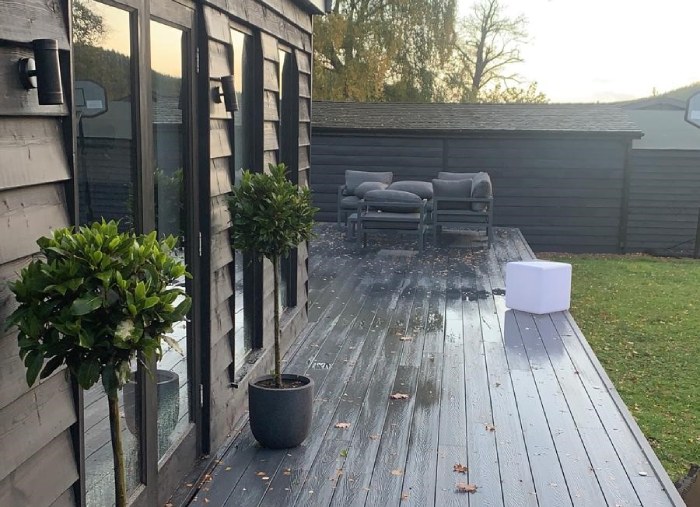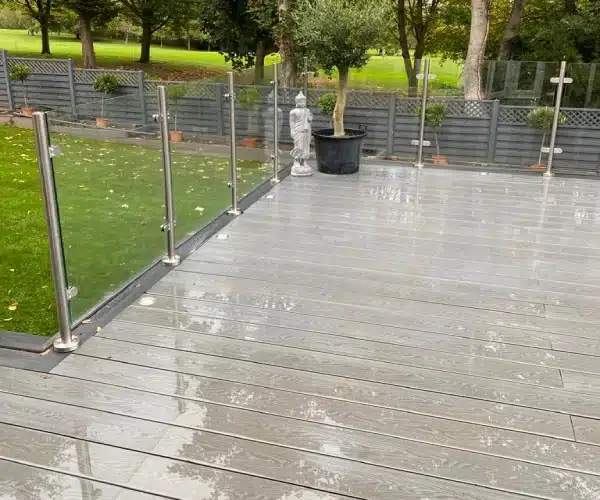What Is The Best Non Slip Decking?
As the composite decking market grows year on year, many people browse the web looking for a decking board that suits their home. The wide variety of decking profiles, structures and designs can leave you confused and overwhelmed by what you see online or in-store.
When it comes to decking construction, you need to decide what type of composites you’ll use. Finding the perfect one will be crucial to your project. We are here to explain why there are different types of composite decking and which type is best for your home/property.
Types of Composite Decking
There are many suppliers of composite decking on the market. Each one of them is different from the other. When choosing the right composite decking for your project, they can be narrowed down by classifying them into different types.
Capped Composites
Capped composite decking often referred to as “second generation” boards are produced with a protective co-extrusion layer which acts as a shield against mother nature’s elements. This material will only lose 5-10% of its colour throughout its lifespan meaning it is more suitable for a home that is south-facing and will be exposed to more sunlight.
Capped composites are relatively stronger and more durable than their older counterparts. They are easier to maintain and offer excellent fade and stain resistance when compared to uncapped or wooden decking.
Capped composites often have a reversible wood grain appearance and an applied PE layer that wraps around the board. Some capped composite decking designs now offer a dual-colour design. This means that one surface is a different colour from the other. The advantage and benefit of this, is it allows you to reverse the entire composite decking board to provide a new colour years later or even create contrast designs using one singular board.
Capped boards tend to have a circular hollow structure which is stronger than the square hollow structure. In essence, the decking board has more material in the design making it more dense and structurally sound.
Capped boards are also more suitable for properties that will have a lot more footfall such as commercial settings like restaurants or apartment complexes. This type of decking is also used on residential homes that have large amounts of footfall such as families that have lots of get-togethers and parties in the garden.
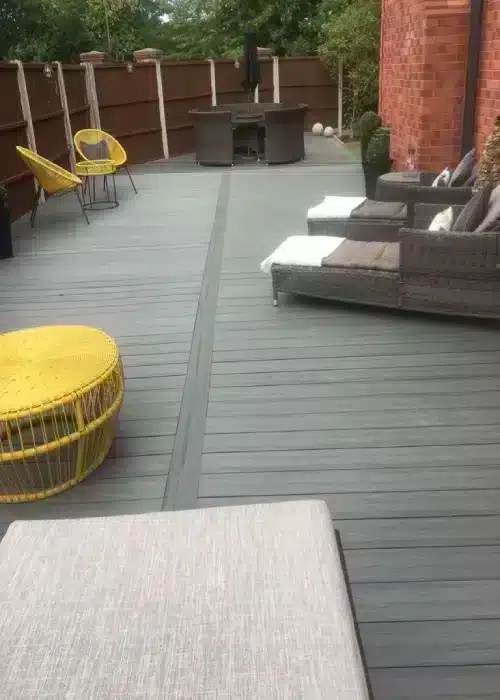
Uncapped Composites
Uncapped decking boards are often referred to as first generation composite decking in the industry. First-generation decking boards are produced with a wood fibre surface layer rather than a PE layer, this provides in consumer eye’s more authenticity in appearance and feel. While uncapped composite decking boards are sturdy, they are more vulnerable to damage, including moulds, mildew, fading, and staining. These types of older composites need to be maintained regularly to prevent damage.
As mentioned uncapped decking boards will fade more than capped decking boards. Wood fibre surface layers are not as resistant to UV rays and are not as hard-wearing when compared with second-generation boards, however uncapped boards are still an excellent option for residential homes with an average amount of footfall (family of 4-5 people). They come with 10-15 year warranties depending on supplier, this means if you have any structural defects or issues with the product, you are entitled to replacement material. Given that first-generation decking boards aren’t as long-lasting as second-generation boards, they are priced more competitively meaning they are more suitable for someone on a budget.
There are two designs with uncapped decking boards, you have grooved and woodgrain. Grooved boards are almost always an uncapped design however you can get woodgrain designs in both uncapped and capped decking boards. Therefore, be sure to check with your supplier if you are purchasing first-generation or second-generation boards when choosing a woodgrain design.
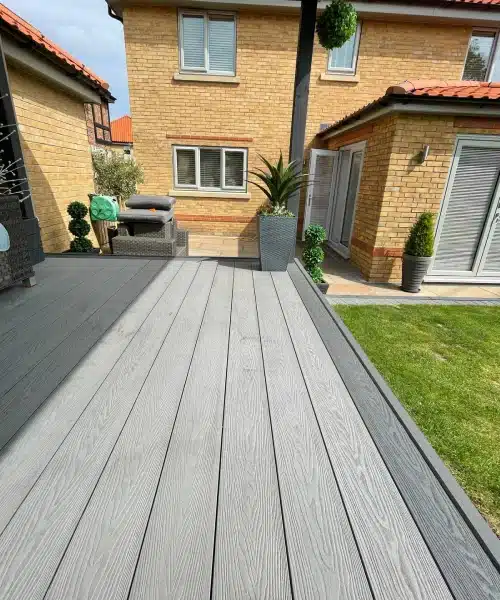
Hollow Composite Decking
Hollow composite decking, unlike solid composites, is a lightweight decking made with fewer materials. Because of this, they are cheaper and easier to work with. As the name implies, they have hollowed portions within the boards. It makes it perfect for ease and speed of installation, this is is due to the boards lightweight design, during installation cables and wires can be ran through the hollow core.
Hollow decking boards are much more common when compared with solid composite decking boards. Solid composite decking boards are produced with more material within the core meaning the cost of materials quickly increases and the manufacturing process takes longer when compared with hollow.
You may be wondering, will hollow decking boards be strong enough for my project? The overall structural integrity of your decking boards will mainly come from the decking subframe and the span of the joists beneath the decking boards. However, if you are looking for a strong decking board that is still affordable there are different designs to consider when looking at hollow decking boards. For example, you have 4 square hollow designs and 5 square hollow designs. A 5 square hollow will be more durable as it’s like a building having an additional pillar.
As mentioned previously, another design for hollow decking boards is a circular hollow design. This is the strongest design for a hollow decking board and you will often see capped decking boards with this core. Despite all these advantages, there are cons to using hollow composites. Unlike solids, they often look like manufactured materials, and are more prone to damage from impacts.
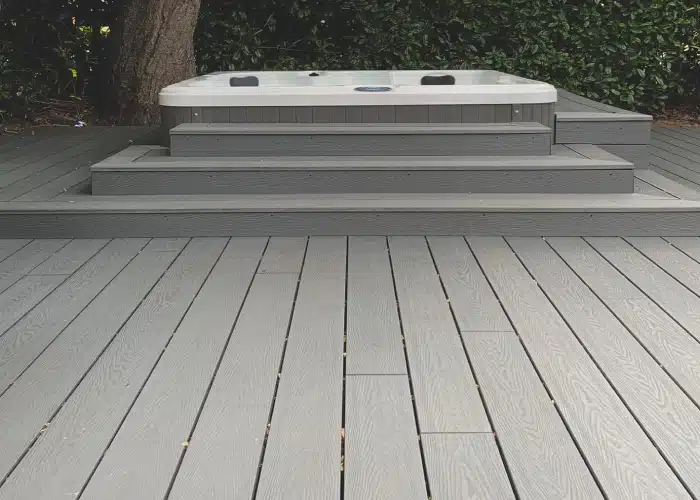
Solid Composite Decking
Another composite decking design is a completely solid structure. This structure provides numerous benefits including enhanced durability, longer life span and an excellent impact resistance. With an extended life span solid composite decking boards can last up to 30 years with no structural issues or defects. The added mass and amount of material used for production creates a landscaping material that can withstand a large amount of weight and pressure and is an excellent option for busy commercial settings such as hotels or popular restaurants.
While solid composites are excellent choices, they do have some disadvantages. Since they are heavier, solid composite decking boards are harder to work with, more so on installation. They are also more prone to increased expansion, leaving the gaps is important when installing. Solid composite boards are considerably more expensive than traditional wood and hollow composite decking boards.
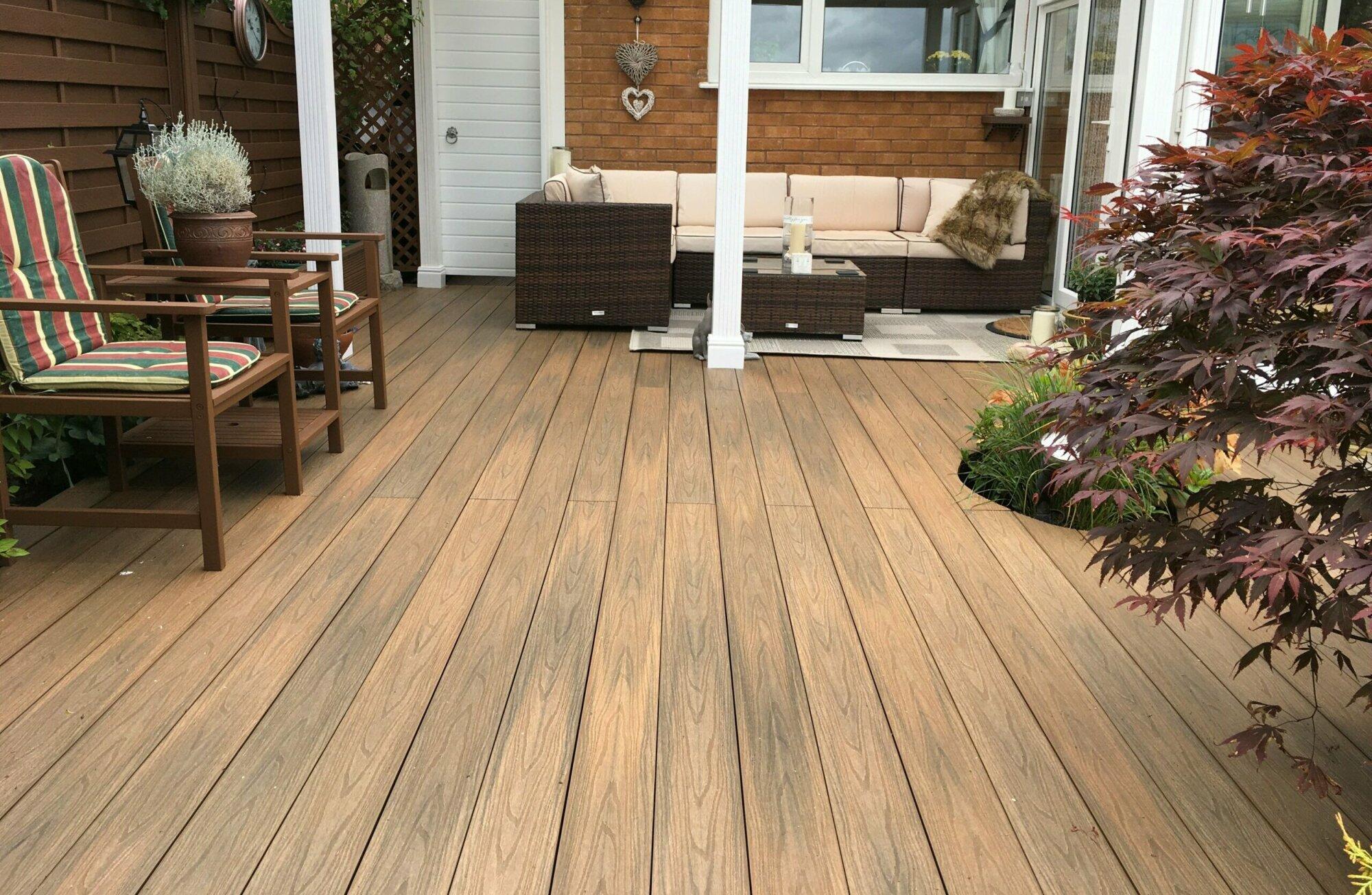
Conclusion
As the composite decking market expands, understanding the different available options is crucial. Uncapped hollow boards are the best selling composite decking in the U.K. They are affordable and offer low maintenance with strong colour stability when compared to wood, however they are not as moisture resistant and will lose more colour over time when compared with capped boards.
Capped composite decking offers increased durability, along with increased stain and fade resistance. They are ultra low maintenance, only requiring simply cleaning regularly. They offer a longer life span and longer visual stability even after many years of use. These added benefits are beneficial to customer’s that are looking for a long term solution and the return on investment with these boards come after a decade of use.
The key question to ask upon purchasing is how long will you be in your property for? What level of maintenance and colour change can you accept? If the answer is minimal then capped composite decking is the product for you.
If your happy to do regular cleaning and happy to lose some colour, lightening in appearance then uncapped hollow composite decking is the option for you.
Is Composite Decking Slippery When Wet?



